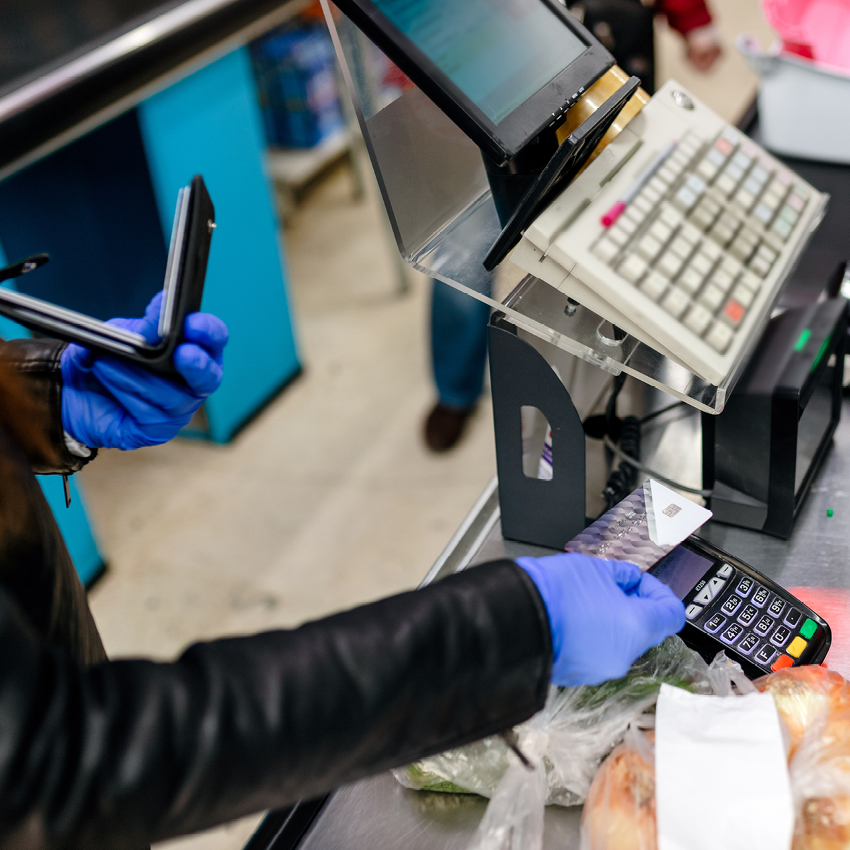Unprecedented business closures, an intermittent supply chain and unemployment reaching 26.5M as of April, have put the retail ecosystem at significant risk. Compared to the 2007-2008 financial crisis, the extent and duration of today\’s situation is profound.
There is a significant shift underway in how we shop for food and essential goods that will fundamentally change retail. Grocers, convenience stores and mass merchandisers who can react to consumers\’ needs, navigate environmental constraints and swiftly adjust their operations are experiencing significant business lifts by leveraging digital commerce, which was only a fraction of total sales before the pandemic.
In challenging conditions, consumers and retailers are both adopting new ways of thinking and behaving, moving beyond the status quo of legacy retail practices. Needs is the impetus of ingenuity and sets the foundation for future innovation.
In challenging conditions, consumers and retailers are both adopting new ways of thinking and behaving and moving beyond the status quo of legacy retail practices. Customer needs is the impetus of ingenuity and sets the foundation for future innovation. Aha, the silver lining in an otherwise miserable pandemic!
Enter \”The Need\”
People are coping with their \”new normal,\” and their purchase behavior reflects this. When comparing March 2020 to March 2019, there has been a 397 percent increase in soup, 377 percent on packaged foods and 190 percent on toilet paper sales. In contrast, travel, resort wear, and event supplies have seen double-digit declines ranging from 30 percent to 77 percent. Shoppers are demonstrating that their new priorities have shifted given the uncertain climate and even brand names are less critical when making a purchase.
About 54.8 percent of retail storefronts have closed, restricting retailers to rely on digital commerce or close up completely. And for businesses like grocers, adjustments to service models, operational capacity, and safety must be addressed almost on the fly. In real time, the digitization of the grocery industry is unfolding in front of us. Consumers\’ needs are explicit and grocers are responding by sidestepping obstacles that once impeded the speed of transformation by ramping up digital commerce and services such as buy online, pick up at curbside and same-day delivery.
New Consumer Habits Shape Grocery
By 2023, e-commerce sales are projected to reach $6.5 trillion. Up to now, much of that spending has focused on apparel, travel, and entertainment, with grocery and essential categories accounting for only 6.3 percent of U.S. households\’ total online grocery-related spending. Whether it was personal habits, preference or perceived convenience to just shop in person in the past, today online grocery services are exploding given the utility and contactless nature for acquiring, paying, and receiving goods.
According to RBC Capital Markets analysis, a recent 1500-person survey revealed that 42 percent of participants purchased online groceries at least once a week since the pandemic. New habits are forming, and perceived barriers for online grocery are falling by the wayside. Consumers realize that food and other essentials may not require a trip to the store. Will this be part of the \”new normal?\” Yes. Retailers who offer digital shopping or contactless service will win.
But wait, digital commerce is only part of the equation.
Say Goodbye to our Friend, the Cash Tender
The ecosystem of enterprise hardware, software, consumer devices and acceptance of contactless pay has been available for some time. Given the concern to reduce, if not eliminate, all unnecessary contact with public surfaces makes this a top priority today for retailers who have not implemented this technology.
In-store contactless payment transactions occur in many ways; here are some broad examples:
- Mobile wallets enabled by smartphones. Payment details can be stored and used for tender through a digital transaction or by holding the device near a contactless-enabled terminal. In the U.S., 94 percent of iPhone users have an Apple Pay-compatible device. Google Pay, Samsung Pay and other smart devices offer similar capabilities.
- Apps such as WeChat, Amazon, and Starbucks offer contactless payment in certain instances. Person-to-person payment apps such as Venmo and PayPal are also becoming a standard way to transfer funds.
- Credit card brands offer contactless cards that allow a consumer to \”tap and pay\” by holding the card near a contactless-enabled terminal or device to capture card information.
This April, Publix deployed tap-to-pay systems in all 1,200-plus stores, citing the intent to help expedite the checkout process and limit contact with public surfaces. Walmart also made improvements to go completely contactless at self-checkout registers in the store, to ensure the health of consumers.
For those who oversee customer experience initiatives, contactless pay is the perfect Venn diagram of desirability by shoppers and retailers. It is made feasible through an expansive hardware and software ecosystem and the viability of secure, fast, and convenient shopping that keeps people transacting.
The Last Mile Determines the Winners
According to a study conducted a year ago by Offers.com, 77 percent of shoppers surveyed said they had not used curbside grocery pickup. Today, this an ideal option that shoppers are taking advantage of, and grocers of all sizes are participating. Allowing shoppers to place online orders, park in designated spots, and have their items loaded into their vehicle without additional face-to-face interactions is an asset during the shutdown.
In the same survey, shoppers reported that 81 percent have never used grocery delivery services. Within one month, February through March, consumers downloaded delivery apps from providers such as Instacart, Walmart Grocery, and Shipt. They have seen daily app downloads significantly jump, 218 percent, 160 percent and 124 percent, respectively. Target\’s app downloads have more than doubled, with up to 20 times the download volume in areas like California, Washington, and New York. Other last-mile examples are Walgreens and Postmates, Kroger and Shipt, HEB and Favor Delivery, and Wegmans and DoorDash, which are now available to serve consumers.
Businesses that have quickly pivoted to curbside or delivery will have some insulation from the drop of in-store traffic. These businesses are now entering into new territory, as they must learn how to manage order intake, order pick and pack and delivery logistics. They must make sense of new data points and find a rhythm to managing a multichannel business. Those already managing across digital and physical channels can test their end-to-end experience and explore new capabilities.
What\’s Next?
It is hard to predict the outcome of today\’s situation; however, here are some key questions to consider that will help reframe the space, place and purpose of retail:
- How might the role of the physical store evolve?
- How might digital shopping include more experiential elements?
- How might we rethink shopping in a physical store given health concerns?
- How might retailers change their footprint to accommodate curbside or pickup outside of a store; or where the consumer waits to enter?
- How might jobs evolve for physical retailers (i.e., cashiers)?
The grocery industry is an indicator of what\’s to come for shopping in the next decade. The pandemic created a tipping point, significantly shifting consumers\’ needs, creating the opportunity for retail to disrupt itself. Regardless of where you fit in the retail ecosystem, how will your business respond? If you aren\’t asking the right questions and mobilizing your teams to strategize now, you may not be prepared when the country reopens its doors.




